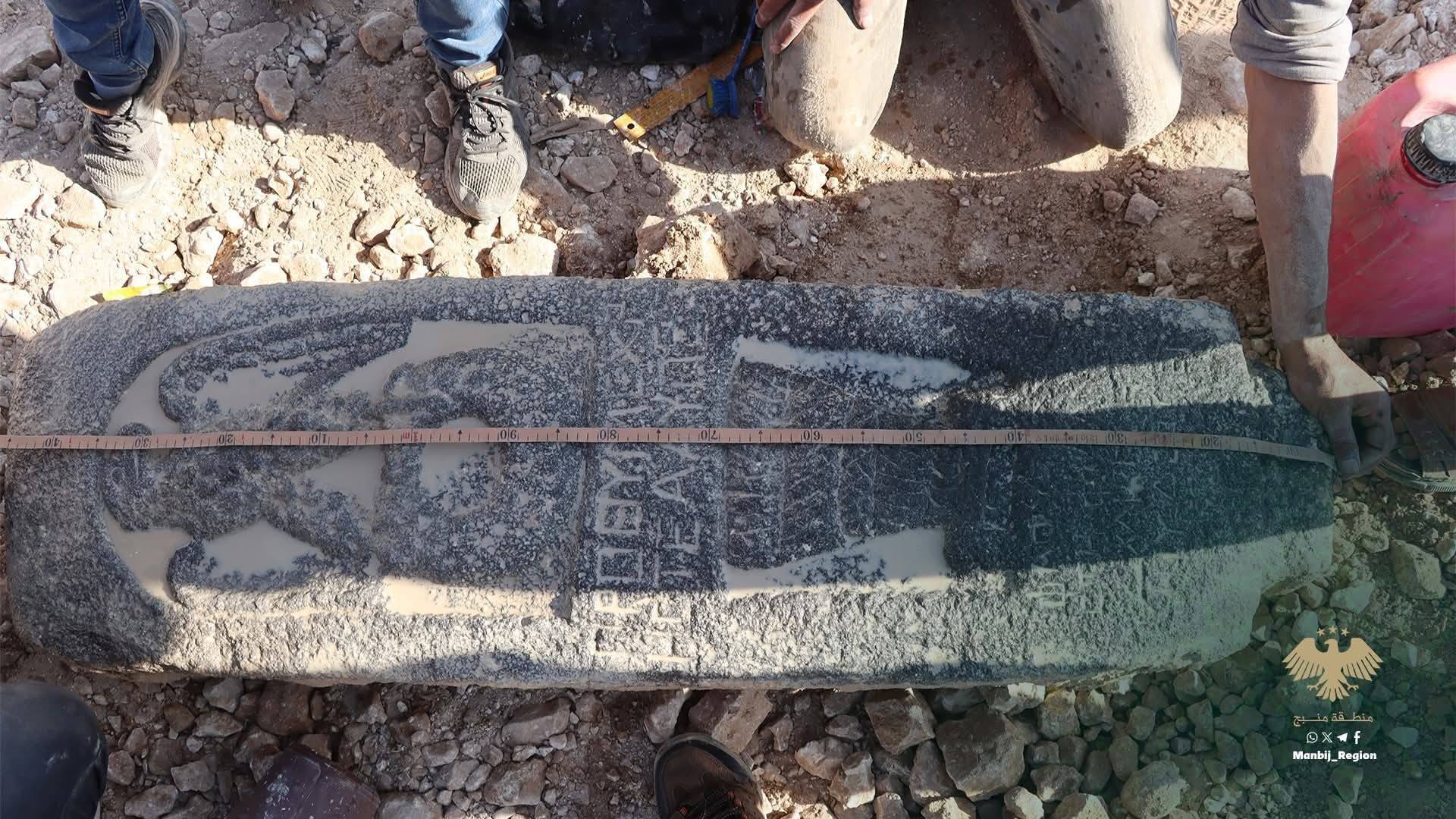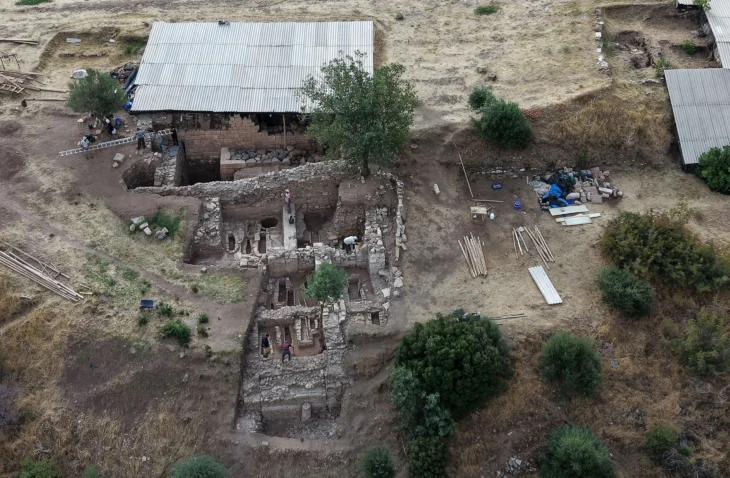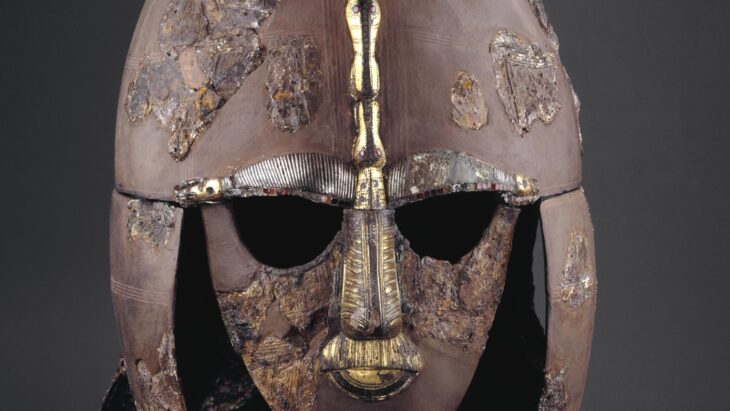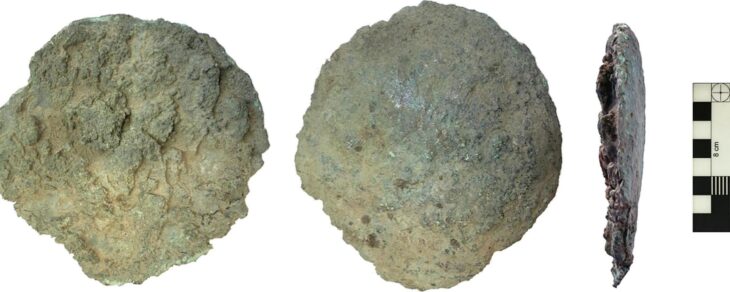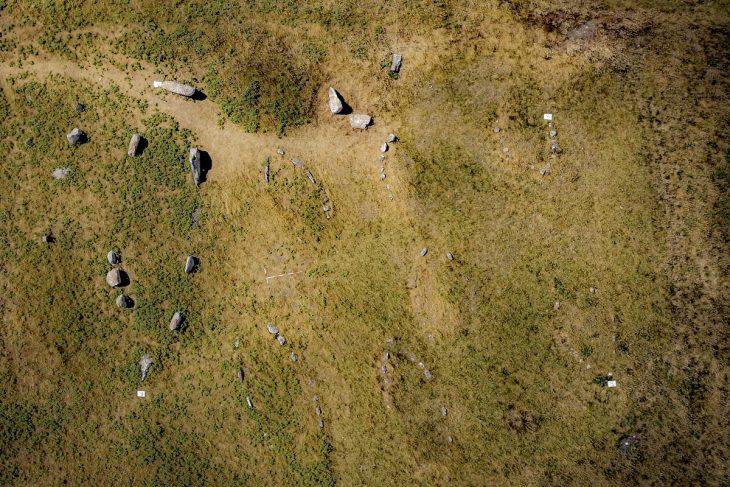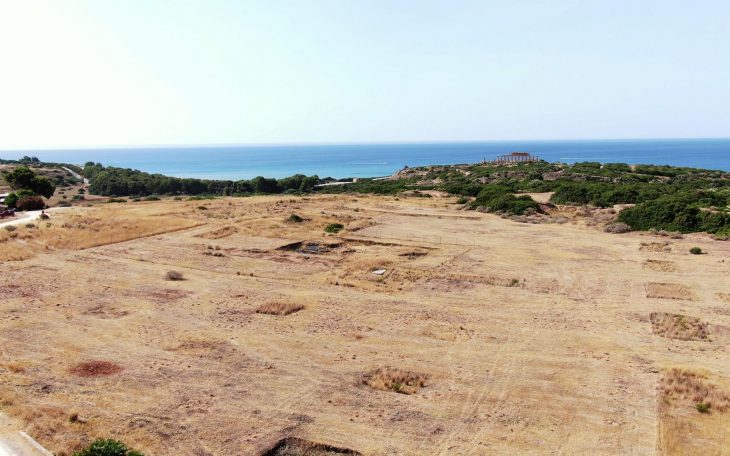A striking Roman-era stele carved from black basalt, featuring a detailed eagle clutching a wreath and adorned with Greek inscriptions, has been found in Manbij, a historic town east of Aleppo, Syria. Believed to be approximately 2,000 years old, the funerary monument provides rare insight into the region’s ancient past and the symbolism of Roman imperial art.
The stele was first spotted by a local resident behind the Cardamom wholesale market, who alerted the Directorate of Museums and Antiquities. Archaeologists promptly recovered the artifact and transferred it to the old bathhouse site in Manbij for secure storage, pending its eventual relocation to Aleppo for further study.
The Eagle in Roman Culture
In Roman iconography, the eagle was a powerful symbol of strength, authority, and divine protection. Frequently associated with Jupiter, the king of the Roman gods, the eagle often appeared on military standards, coins, and funerary monuments.
Its depiction on this stele, with outstretched wings and a wreath in its talons, may have been intended to signify the deceased’s valor, eternal life, or allegiance to Roman ideals. Funerary steles like this were commonly used to honor prominent citizens or soldiers, reflecting both personal achievements and broader imperial ideology.

Greek Inscriptions: A Window into the Past
The Greek inscriptions carved on the stele suggest a fusion of Roman and Hellenistic influences in northern Syria. Greek was widely used in the eastern Roman provinces, especially in administrative and funerary contexts. These inscriptions may reveal the name, rank, or lineage of the deceased, offering a tangible connection to the personal lives of Manbij’s ancient inhabitants.
📣 Our WhatsApp channel is now LIVE! Stay up-to-date with the latest news and updates, just click here to follow us on WhatsApp and never miss a thing!!
Manbij: A Historical Crossroads
Manbij, historically known as Hierapolis Bambyce, has been an important cultural and commercial hub since antiquity. Under Roman rule, the city was a provincial center with significant trade connections, hosting temples, public buildings, and tombs. The discovery of the eagle stele adds to evidence of Roman influence in northern Syria and illustrates the city’s role as a regional crossroads where Roman, Hellenistic, and local traditions merged.
The city’s long history has also made it a target for looting, particularly during recent conflicts. Between 2011 and 2019, roughly one million artifacts were looted in Syria, and over 700 archaeological sites suffered heavy damage. Manbij itself became a focal point of illicit excavation during the civil war. Under ISIS control, residents were allowed to dig for antiquities on their land, provided they reported figural artifacts for destruction. Following the Syrian Democratic Forces’ takeover in 2016, local elites often oversaw excavations, turning the city into a hub for artifact smuggling to neighboring countries and beyond.
Protecting Syria’s Cultural Heritage
Despite these challenges, community cooperation has proven crucial. The resident who reported the eagle stele exemplifies how local vigilance can help safeguard Syria’s invaluable cultural heritage. Once fully analyzed, the stele will contribute not only to the understanding of Roman funerary practices but also to the broader narrative of Manbij’s historical significance.
This discovery underscores the enduring legacy of Roman influence in Syria and the symbolic power of the eagle motif. As archaeologists continue their work, the stele promises to illuminate the lives and beliefs of ancient communities that once thrived in Manbij, bridging millennia of history and connecting modern observers to the grandeur of the Roman world.
Cover Image Credit: Mambij Region

